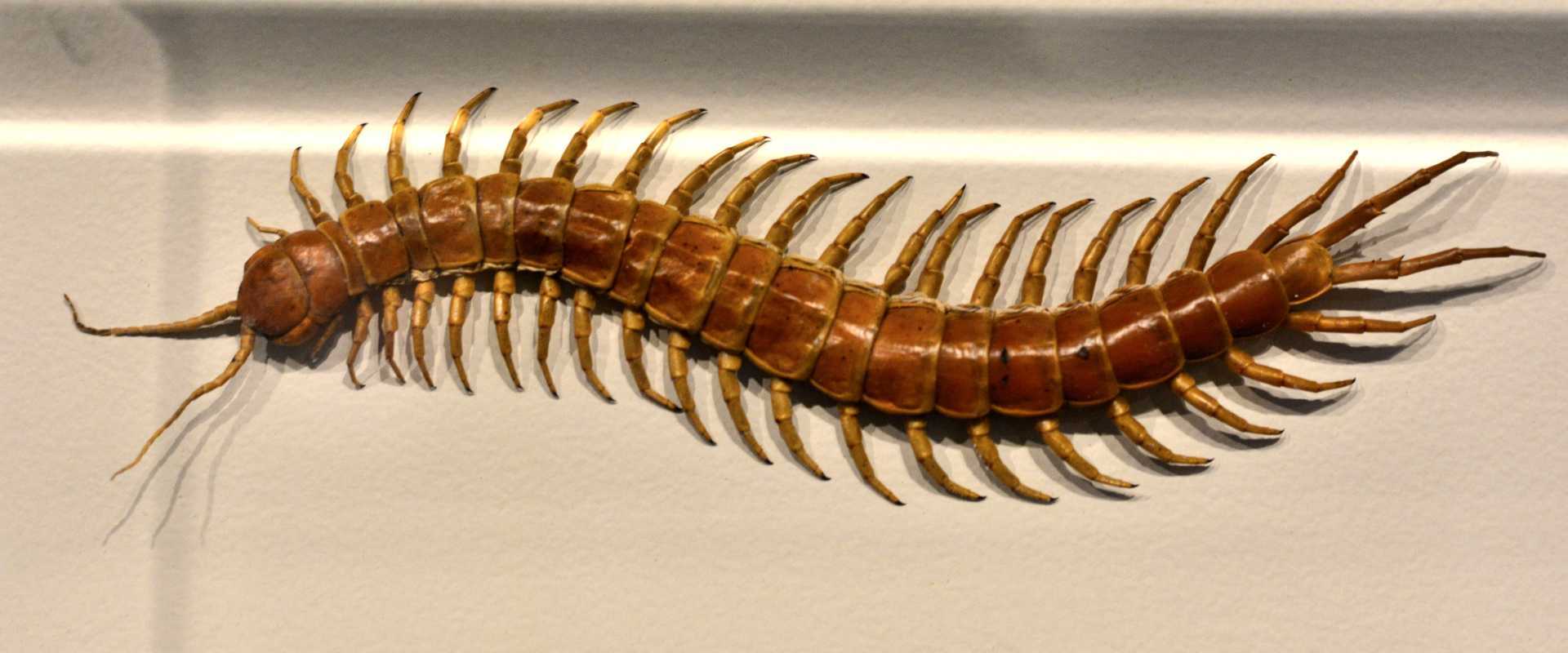
What Are Centipedes?
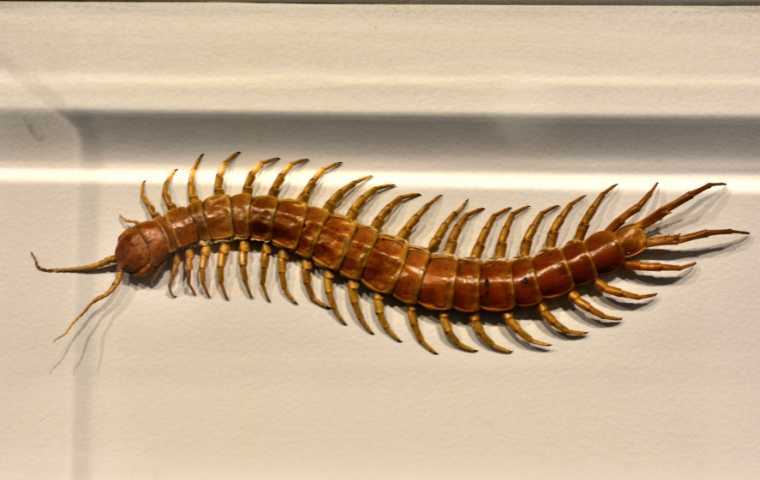
Centipedes are arthropods belonging to the class Chilopoda. They are elongated, segmented creatures known for their many legs, which is where their name is derived, as "centipede" means "100 legs." However, most centipedes do not have exactly 100 legs; their leg count varies depending on the species, ranging from as few as 15 pairs (30 legs) to over 100 pairs (200+ legs). These leg pairs are arranged along their body, with each segment typically having one pair of legs.
Centipedes are carnivorous predators and play a valuable role in ecosystems by helping to control insect populations. They have a pair of venomous fangs, called forcipules, located near their head, which they use to capture and immobilize their prey. Once immobilized, they inject venom to subdue their victims. While centipede venom is not typically dangerous to humans, it can cause localized pain and discomfort.
These arthropods are found in a variety of terrestrial habitats worldwide, from tropical rainforests to deserts. They are generally nocturnal and hide during the day in damp, dark places like leaf litter, logs, or soil crevices. Centipedes are characterized by their long, flattened bodies and segmented exoskeletons, which are often brightly colored or patterned. Their antennae and numerous legs give them a distinctive appearance.
Centipedes are fascinating creatures with a wide range of species, each adapted to its specific environment. They contribute to the balance of ecosystems by helping control insect populations and serve as intriguing subjects for entomologists and enthusiasts interested in the diversity of life on Earth.
Types of Centipedes
The United States is home to a variety of centipede species, representing different families and types. Here is a detailed overview of some of the common types of centipedes found in the United States:
House Centipede (Scutigera coleoptrata): House centipedes are one of the most commonly encountered centipede species in homes across the United States. They have long, slender bodies and distinctive long legs. House centipedes are beneficial as they feed on other household pests, but their appearance can be startling to some people.
Eastern Red Centipede (Scolopocryptops sexspinosus): This centipede is found in the eastern and southeastern regions of the United States. It is known for its bright red coloration and is often found in leaf litter or under stones.
Giant Desert Centipede (Scolopendra heros): Found in the southwestern United States, particularly in desert regions, the giant desert centipede is one of the largest centipede species in North America. It can reach lengths of up to 8 inches and is venomous, delivering a painful bite.
North American Stone Centipede (Lithobius spp.): Several species of stone centipedes are found throughout North America. They are typically small and are often encountered in wooded areas, gardens, or under rocks and logs.
Tiger Centipede (Scolopendra polymorpha): Native to the southwestern United States, tiger centipedes are named for their striking black and yellow striped coloration. They are venomous and should be handled with caution.
Texas Red-Headed Centipede (Scolopendra heros castaneiceps): This subspecies of the giant desert centipede is found in Texas and surrounding states. It is known for its reddish head and venomous bite.
Blue-legged Centipede (Scolopocryptops spp.): These centipedes are often found in the western United States, and some species have blue legs, giving them their name. They are typically not considered dangerous to humans.
Woodland Centipede (Lithobius spp.): Woodland centipedes are distributed across the United States and are often encountered in forested habitats. They have relatively long bodies and are not venomous.
Bark Centipede (Hemiscolopendra marginata): These centipedes are found in the southeastern United States and are often located in rotting wood or leaf litter. They have a distinctive flattened appearance.
Northern Blue Centipede (Lithobius forficatus): This species is found in the northern United States and is known for its blue-gray coloration. They are typically harmless to humans.
While most centipedes in the United States are not dangerous to humans, some larger species, such as the giant desert centipede, can deliver painful bites, and individuals with allergies or sensitivities may experience more severe reactions. When encountering centipedes, especially venomous ones, it's advisable to exercise caution and avoid handling them.
Centipede Identification
Centipedes exhibit a distinctive appearance characterized by their elongated, flattened bodies and numerous legs. Here is a comprehensive description of their physical features:
- Body Shape: Centipedes have a long, segmented body that can range in length from a few millimeters to several inches, depending on the species. The body is typically flattened from top to bottom, allowing them to squeeze into narrow crevices.
- Segmentation: Their body is divided into numerous segments, with each segment having a pair of legs. The number of segments and legs can vary greatly among species, but it's essential to note that they do not have exactly 100 legs as their name might suggest.
- Legs: Centipedes are renowned for their many legs. These legs are typically thin and elongated, each ending in a claw-like structure. The number of leg pairs varies among species and can range from 15 pairs (30 legs) to over 100 pairs (200+ legs). The legs are arranged in a linear fashion along the sides of their bodies.
- Coloration: Centipedes come in a variety of colors and patterns, depending on the species. Some are brown or reddish-brown, while others may have striking coloration with contrasting bands or stripes. These colors often serve as camouflage in their respective habitats.
- Head: At the front of the centipede's body is the head, which is distinct from the body segments. The head features a pair of sensory antennae and a pair of venomous fangs called forcipules. These forcipules are used for capturing and immobilizing prey.
- Eyes: Centipedes typically have a pair of simple eyes or ocelli on their head, which can vary in number among different species. These eyes are often not well-developed, as centipedes rely more on their antennae for sensory perception.
- Antennae: They have a pair of long, thread-like antennae on their head, which are used for detecting their surroundings, including prey and potential threats.
- Exoskeleton: Centipedes have an exoskeleton made of chitin, which provides protection and support to their body. This exoskeleton may have a glossy or matte appearance, depending on the species.
- Size: Centipedes come in various sizes, with some species being relatively small, around a few centimeters in length, while others can grow larger, reaching lengths of several inches or more.
Centipedes' appearance can vary significantly from one species to another, and their adaptations often reflect their specific habitat and lifestyle. While their numerous legs and segmented bodies are distinctive characteristics, the coloration and other features can help in identifying different centipede species.
Learn more: What Do Centipedes Look Like?
Where Are Centipedes Found?
Centipedes can be found in a wide range of terrestrial habitats around the world. They are particularly diverse in tropical regions but can also be encountered in temperate and even arid environments. Here are some common places where you might find centipedes:
- Leaf Litter: Centipedes are often found beneath fallen leaves and other organic debris on the forest floor. Leaf litter provides them with a humid and sheltered environment where they can hunt for prey and hide from predators.
- Soil and Moist Soil: Many centipede species burrow into the soil or reside in moist soil, especially in gardens, agricultural fields, and woodland areas. They create burrows or tunnels in the ground and come out to hunt at night.
- Logs and Rotting Wood: Centipedes are known to inhabit decaying logs and rotting wood. These materials provide a suitable habitat and a source of prey, such as insects and other arthropods.
- Rocky Habitats: Some centipede species prefer rocky environments, such as cliffs, rocky outcrops, or caves. These habitats offer protection and opportunities to find prey.
- Caves: Certain cave-dwelling centipede species have adapted to life in dark, underground environments. They are specially adapted to thrive in the challenging conditions of caves.
- Moist Areas: Centipedes are highly sensitive to desiccation (drying out), so they are often found in areas with high humidity. This includes damp basements, crawl spaces, and bathrooms in homes.
- Gardens and Yards: Centipedes can also be present in gardens, especially in areas with lush vegetation and organic matter. They may hide under pots, rocks, or mulch during the day.
- Tropical Rainforests: In tropical rainforests, centipedes are abundant on the forest floor and in the leaf litter. These environments provide them with a rich source of food and shelter.
- Deserts: While less common, some centipede species have adapted to desert environments. They are often found in burrows or beneath rocks, where conditions are cooler and more humid than the surrounding desert.
- Human Structures: Centipedes can occasionally find their way into homes, particularly if there are entry points such as cracks in walls or foundations. They may seek refuge in dark, damp areas like basements, bathrooms, or crawl spaces.
Centipedes are primarily nocturnal creatures, so you're more likely to encounter them at night. While centipedes are generally harmless to humans, some larger species may deliver a painful bite if handled, so it's advisable to observe them from a safe distance and avoid touching them.
Centipede Life Cycle
The life cycle of centipedes is characterized by a series of stages, including egg-laying, hatching, and several juvenile stages before reaching adulthood. Centipedes are arthropods, and their life cycle is similar to that of other arthropods, such as insects and spiders. Here is a comprehensive overview of the life cycle of centipedes:
- Egg Stage: The life cycle of centipedes begins with the laying of eggs. Female centipedes typically lay their eggs in hidden, sheltered locations, such as underground burrows, crevices, or within organic matter like rotting wood or leaf litter. The exact number of eggs and the time it takes for them to hatch varies among species.
- Hatching: After a period of incubation, which can range from a few weeks to several months, depending on environmental conditions, the centipede eggs hatch. The emerging juvenile centipedes are known as "nymphs."
- Nymph Stage: Nymphs resemble miniature versions of adult centipedes but are smaller and lack the full complement of legs. They typically have only a few pairs of legs when they hatch, and they gradually develop more leg pairs as they molt and grow.
- Molting: Like other arthropods, centipedes grow by molting, shedding their exoskeleton to accommodate their increasing size. During each molt, the nymphs gain additional leg pairs and body segments until they reach maturity. The number of molts varies among species, but it is usually between 5 and 12 molts before reaching adulthood.
- Juvenile Development: As centipedes continue to molt and grow, they become increasingly similar in appearance to adult centipedes. The number of leg pairs and body segments increases with each molt, and they develop their characteristic venomous fangs.
- Adulthood: Once centipedes reach maturity, they have their full complement of body segments and leg pairs. Depending on the species, they can have anywhere from 15 to over 100 leg pairs. At this stage, they are capable of reproduction.
- Reproduction: Adult centipedes reproduce by mating. Males and females locate each other through pheromone signals or other sensory cues. After mating, females lay eggs in suitable locations, and the life cycle begins anew.
- Lifespan: The lifespan of centipedes varies among species, but most centipedes live for several years. Some larger species can live for up to a decade or more under the right conditions.
Centipedes are solitary creatures and do not exhibit parental care. Once the eggs are laid and the nymphs hatch, they are on their own and must fend for themselves. Their success in finding food and suitable shelter is crucial for their survival and development through the various life stages.
Centipede Diet
Centipedes are carnivorous predators, and their diet primarily consists of other small invertebrates. They are highly efficient hunters, and their choice of prey depends on their size and the specific habitat they inhabit. Here's a detailed overview of what centipedes eat:
Insects: Centipedes are voracious insect hunters. They often prey on a variety of insects, including ants, termites, beetles, roaches, crickets, and caterpillars. They use their quick speed and venomous fangs to capture and immobilize their prey.
Arachnids: Centipedes will also feed on other arachnids, such as spiders, scorpions, and mites. They are well-equipped to overpower and consume these creatures due to their venomous fangs.
Worms: Some centipede species will eat small earthworms and other segmented worms. They pierce the soft body of the worm with their fangs and inject venom to immobilize it.
Slugs and Snails: In moist environments, centipedes may hunt and feed on slugs and snails. They use their speed and venom to capture and consume these slow-moving gastropods.
Small Vertebrates: Larger centipede species, such as the giant centipede (Scolopendra gigantea), have been known to capture and consume small vertebrates like mice, birds, and reptiles. These larger centipedes have powerful venom and can subdue relatively large prey.
Other Centipedes: Cannibalism is not uncommon among centipedes. Some species will cannibalize smaller or injured centipedes when suitable prey is scarce.
Amphibians: In some cases, centipedes have been observed preying on small amphibians like frogs and toads. This behavior is more common among larger centipede species.
Dead and Dying Organisms: Centipedes are opportunistic feeders and may scavenge on dead or dying organisms when live prey is scarce. They can help in the decomposition process by consuming carrion.
Eggs and Larvae: Some centipedes may feed on the eggs and larvae of other arthropods, especially if they come across nests or breeding sites.
Centipedes are not herbivorous; they do not consume plant matter. They are adapted for a predatory lifestyle and play a crucial role in controlling populations of various invertebrates in their ecosystems. Their venomous fangs are primarily used to immobilize and subdue prey rather than being a direct threat to humans, although some larger centipede species can deliver painful bites if handled.
Learn more: What Do Centipedes Eat?
Do Centipedes Bite?
Yes, centipedes are capable of biting, and some species have venomous fangs that they use to capture and immobilize their prey. However, centipedes are generally not aggressive toward humans and only bite in self-defense when they feel threatened or cornered. Here are some important details about centipede bites:
- Venomous Fangs: Centipedes have a pair of modified front legs called forcipules, which are equipped with venom glands and fangs. These forcipules are located near the head and are used to inject venom into their prey.
- Painful but Generally Not Dangerous: Centipede bites can be painful and cause localized discomfort. The severity of the bite depends on various factors, including the size and species of the centipede and the individual's sensitivity to the venom. In most cases, centipede bites are not considered medically significant, and the pain and symptoms typically subside within a few hours to a couple of days.
- Allergic Reactions: Some individuals may experience allergic reactions to centipede venom, which can result in more severe symptoms, such as swelling, redness, and prolonged pain. In rare cases, severe allergic reactions may require medical attention.
- Prevention: To avoid centipede bites, it's best to refrain from handling these creatures. If you encounter a centipede, it's advisable to use caution and not provoke or handle it. Wear gloves when gardening or working in areas where centipedes might be present to reduce the risk of accidental bites.
- First Aid: If bitten by a centipede, clean the wound with soap and water and apply a mild antiseptic to reduce the risk of infection. Over-the-counter pain relievers and cold compresses can help alleviate pain and swelling. If you experience an allergic reaction or severe symptoms, seek medical attention.
While centipede bites can be uncomfortable, they are not typically life-threatening, and fatalities from centipede bites are extremely rare. Most centipede species are more interested in hunting small invertebrates and do not view humans as prey. As such, centipede bites are usually a defensive response to perceived threats.
Learn more: Do Centipedes Bite?
Frequently Asked Questions About Centipedes
Are centipedes poisonous?
Centipedes are venomous but not typically considered poisonous to humans.
Learn more: Are Centipedes Poisonous?
Are centipedes dangerous?
Despite their intimidating appearance, centipedes are generally not considered to be dangerous to humans. In most cases, their venom is not strong enough to cause significant harm, and a bite from a centipede is likely to cause only mild discomfort and localized swelling, similar to a bee sting. However, it is worth noting that some species of centipedes, particularly those found in tropical regions, may have venom that is more potent and could cause more serious symptoms, such as pain, nausea, and difficulty breathing.
It is also important to note that some individuals may be allergic to centipede venom, which could lead to a more serious reaction. If you are bitten by a centipede and experience symptoms such as difficulty breathing, excessive swelling, or severe pain, it is important to seek medical attention as soon as possible.
Learn more: Do centipedes bite?
What are the differences between centipedes and millipedes?
Centipedes and millipedes are both elongated, segmented arthropods that have many legs, but there are several key differences between the two groups:
Legs per segment: Centipedes have only one pair of legs per segment, while millipedes have two pairs of legs per segment. This means that centipedes have more segments and fewer legs overall than millipedes.
Body shape: Centipedes have a cylindrical, flattened body that is divided into two main parts: the head and thorax. In contrast, millipedes have a more rounded, worm-like body.
Mouthparts: Centipedes have sharp, venomous mandibles that are used to capture and immobilize prey. In contrast, millipedes do not have venomous mandibles, and feed on decaying plant material.
Defense mechanisms: Centipedes can release a noxious fluid from glands located in their thorax, which can deter predators. Millipedes, on the other hand, curl up into a tight spiral when threatened, which helps to protect their vulnerable underbelly.
Habitat: Centipedes are generally found in moist, dark environments such as caves, crevices, and under logs and rocks. Millipedes are found in similar environments, but they are also commonly found in leaf litter and soil in forests and gardens.
Learn more: Centipedes vs Millipedes
What are the differences between centipedes and silverfish?
Centipedes and silverfish are both arthropods, but they belong to different orders and have distinct physical and behavioral characteristics. Centipedes are members of the order Chilopoda and are characterized by their long, flattened body and many legs, while silverfish belong to the order Thysanura and are known for their teardrop-shaped body and three long tail-like appendages.
Appearance: One of the most noticeable differences between centipedes and silverfish is their physical appearance. Centipedes have a segmented body that is flat and elongated, with each segment bearing a pair of legs. They are usually brown or black in color and have a hard exoskeleton. In contrast, silverfish have a slender, teardrop-shaped body that is light gray or silver in color. Their exoskeleton is softer and scalier, and they have three long antennae and three long tail-like appendages.
Diet: Another key difference between centipedes and silverfish is their diet. Centipedes are carnivorous and feed on insects and other small invertebrates. They use their sharp, venomous fangs to immobilize their prey, which they then devour. In contrast, silverfish feed on carbohydrates and proteins found in books, paper, clothing, and other household items. They are notorious for damaging books, wallpaper, and clothing, and they are attracted to starchy and sugary substances.
Habitat: Centipedes and silverfish also have different habitat preferences. Centipedes are typically found in damp, dark environments such as basements, crawl spaces, and cellars, where they can hide from predators and find plenty of prey. Silverfish, on the other hand, are more versatile and can be found in a wider range of habitats, including attics, basements, and closets. They are often attracted to warm, humid environments and are known for their ability to tolerate a wide range of temperatures and moisture levels.
Movement: Centipedes and silverfish also have distinct movement patterns. Centipedes have many legs and move quickly, making them well-equipped to escape predators. They are known for their agility and ability to navigate complex environments. In contrast, silverfish have a distinctive, wiggling movement that makes them difficult to capture. They are known for their speed and ability to scurry into cracks and crevices.
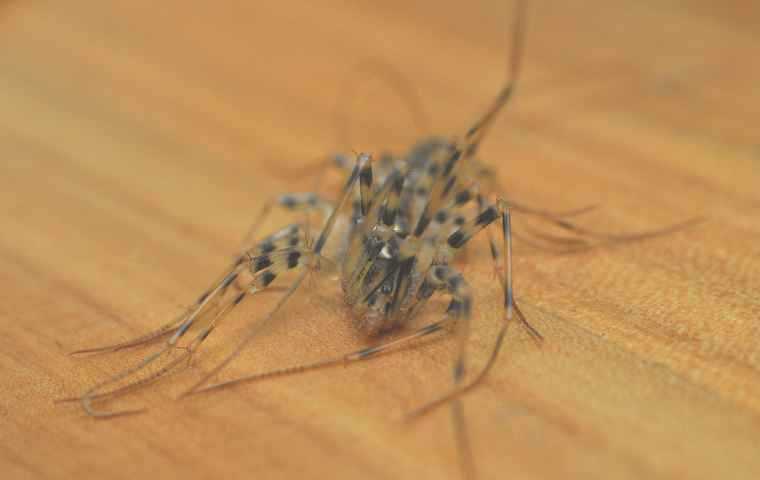
Why do I have a centipede problem?
Centipede infestations in homes can be caused by several factors, including moisture levels, availability of food, access to shelter, climate, and location. By understanding these causes, you can take the necessary steps to prevent and control infestations, and keep centipedes out of your home.
Moisture: Centipedes are attracted to moist environments, so homes with high humidity levels or damp conditions can attract centipedes. This can be due to issues such as leaky pipes or faucets, poor ventilation, or a damp basement. If you have high humidity levels in your home, consider using a dehumidifier to reduce moisture levels and make your home less attractive to centipedes.
Availability of food: Centipedes feed on insects and other small invertebrates, so homes with high populations of these prey items can attract centipedes. To reduce the availability of food in your home, remove piles of leaves, firewood, and other debris from around your home, and use insecticides to control populations of other pests.
Access to shelter: Centipedes require shelter to survive, and homes with cracks and crevices, piles of leaves or firewood, and other hiding places can provide shelter for centipedes. To reduce access to shelter in your home, seal cracks and crevices with caulk or weather-stripping, and eliminate piles of leaves and other debris from around your home.
Climate: Homes in warm and humid climates are more likely to attract centipedes, as these conditions are ideal for their survival. If you live in a warm and humid climate, consider taking extra precautions to reduce moisture levels and eliminate hiding places in your home.
Location: Homes located near forests, deserts, caves, or mountainous regions may be more likely to attract centipedes, as these areas are natural habitats for these arthropods. If you live near one of these habitats, consider taking extra precautions to prevent centipede infestations in your home.
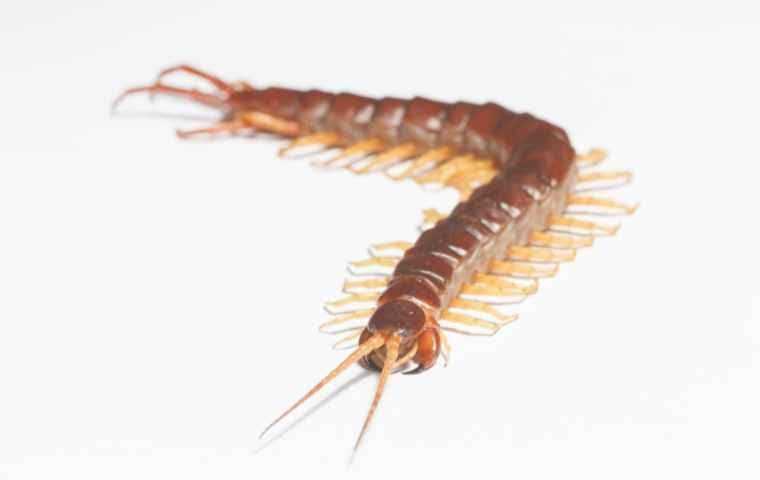
How do I get rid of centipedes?
Reduce moisture levels: Centipedes thrive in moist environments, so reducing humidity levels in your home can help to reduce the number of centipedes. This can be done by using a dehumidifier, fixing leaky pipes and faucets, and making sure that your home is well-ventilated.
Seal entry points: Centipedes can enter your home through small cracks and crevices, so sealing these entry points can help to keep them out. Use caulk or weather-stripping to seal around windows, doors, and other openings in your home.
Eliminate their food sources: Centipedes feed on insects and other small invertebrates, so reducing the number of these prey items in your home can help to reduce the number of centipedes. You can do this by removing piles of leaves, firewood, and other debris from around your home, and by using insecticides to control populations of other pests.
Use centipede repellents: There are several natural and chemical repellents that can be used to deter centipedes from entering your home. Some effective options include vinegar, diatomaceous earth, and essential oils such as lemon eucalyptus and peppermint.
Call a professional: If you are unable to get rid of centipedes on your own, consider calling a professional pest control service. A trained pest control specialist will be able to assess your home and recommend the best course of action for eliminating centipedes.
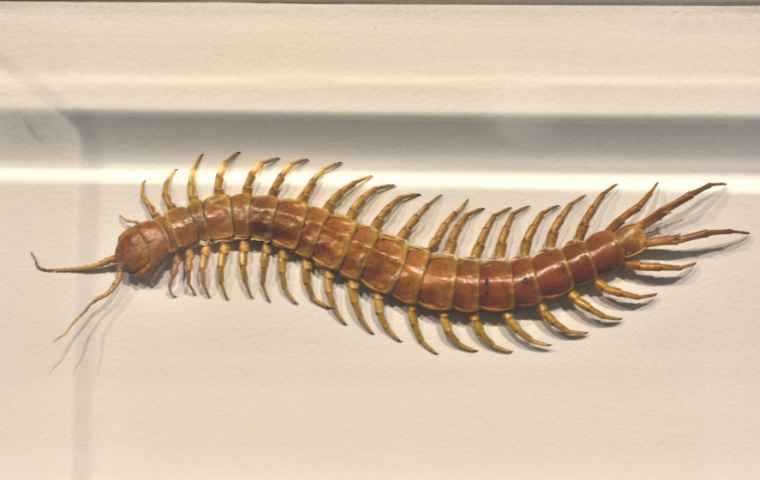
How can I prevent centipedes in the future?
Here are some steps you can take to prevent centipedes from infesting your home in the future:
Reduce moisture: As mentioned, centipedes are attracted to moist environments, so reducing moisture levels in your home can help prevent infestations. This can be done by fixing leaky pipes and faucets, improving ventilation, and using a dehumidifier if necessary.
Eliminate hiding places: Centipedes require hiding places to survive, so removing piles of leaves, firewood, and other debris from around your home can help reduce the number of hiding places available to centipedes.
Seal cracks and crevices: Inspect your home's foundation and walls for cracks and crevices, and seal any gaps or holes with caulk or weather-stripping to prevent centipedes from entering your home.
Control other pests: As mentioned, centipedes feed on insects and other small invertebrates, so controlling populations of these pests can help reduce the food available to centipedes. Consider using insecticides to control populations of pests like ants, spiders, and silverfish.
Use sticky traps: You can use sticky traps to trap and monitor centipede populations in your home. If you do find centipedes in your home, this can help you determine the location of the infestation and take the necessary steps to eliminate it.
By following these steps, you can help prevent centipede infestations in your home and keep these pests at bay. If you have a persistent infestation, consider hiring a professional pest control service to help eliminate the problem.
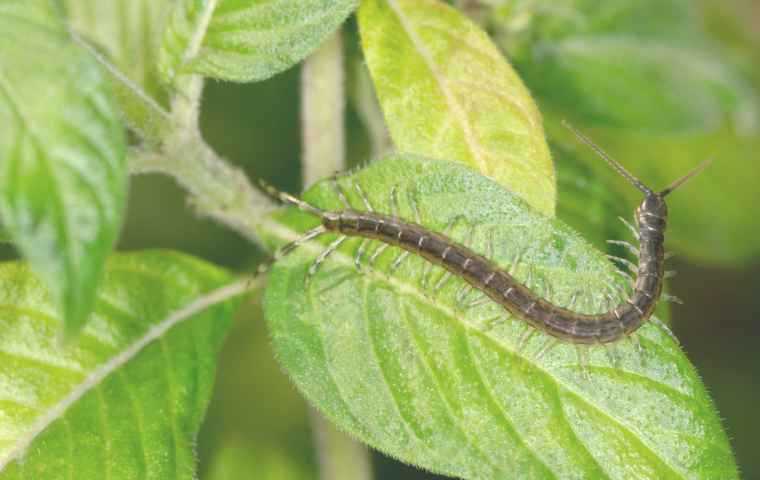
Are centipedes beneficial?
Yes, centipedes can be considered beneficial in some ways. They play a role in controlling populations of insects and other small invertebrates, which can help to maintain balance in the ecosystem. By consuming large numbers of pests such as mites, flies, and beetles, centipedes can help to reduce the populations of these insects and prevent damage to crops and gardens.
In addition to their role in pest control, centipedes also serve as a food source for other predators, such as birds and reptiles. This makes them an important part of the food chain and helps to maintain the balance of the ecosystem.
However, it's important to note that centipedes can also become a nuisance when they venture into human habitats, such as homes and gardens. While they are generally not dangerous to humans, some species of centipedes have a painful bite, and their presence can be unsettling to some people. If you have concerns about a centipede infestation in your home, it's best to contact a pest control professional for assistance.
Overall, centipedes can play a beneficial role in the ecosystem by controlling pest populations and serving as a food source for other predators. While they can become a nuisance in human habitats, they are generally not considered dangerous to humans.
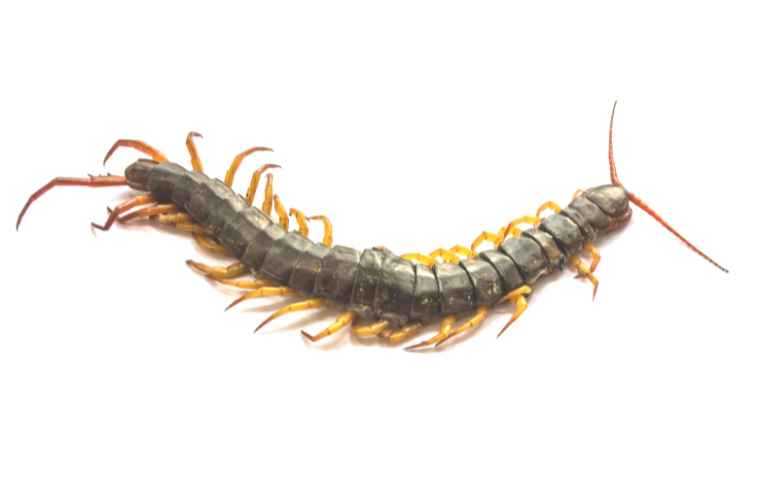
Latest Blog Posts
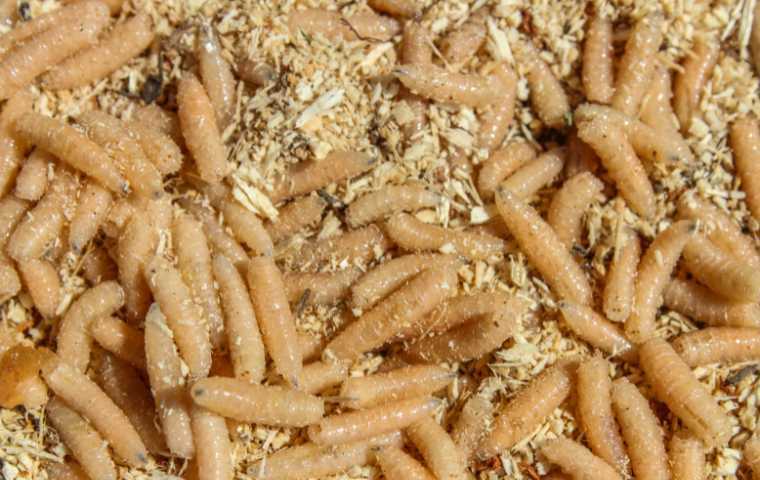
What You Should Know About Maggots
January 10, 2024
Explore the role of maggots in nature, their feeding habits, and learn how to prevent infestations. Discover the fascinating world of these decomposers.Read More
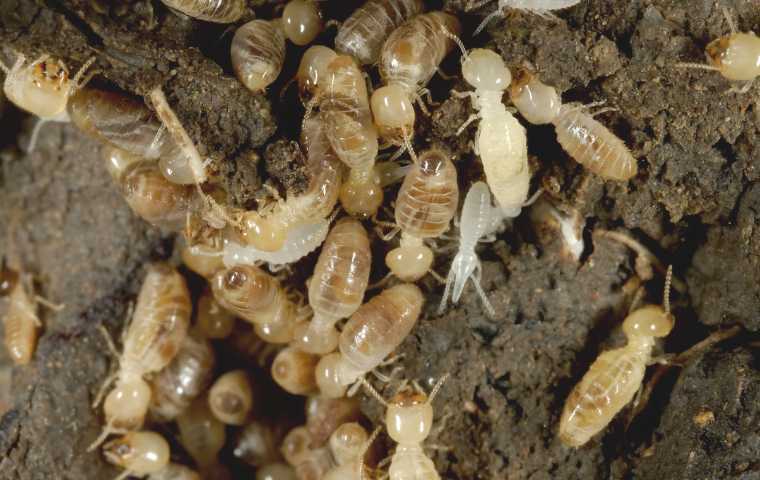
What Do Termites Look Like?
January 09, 2024
Explore the intricate world of termites with our comprehensive guide on what termites look like.Read More
